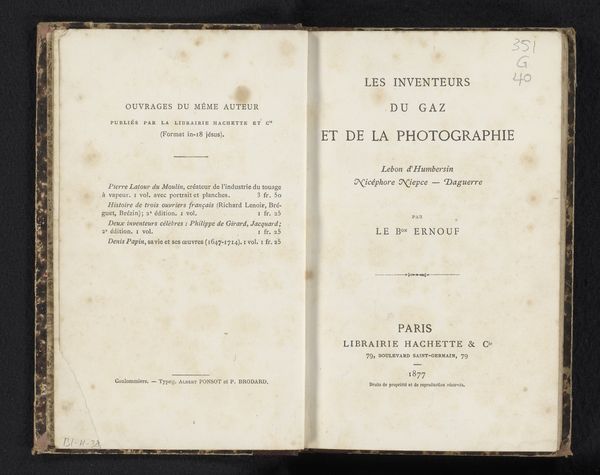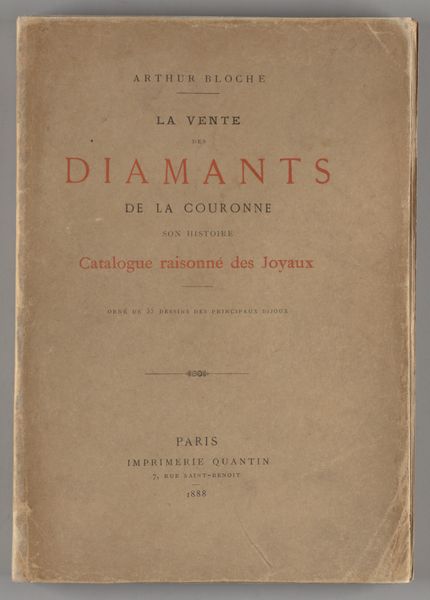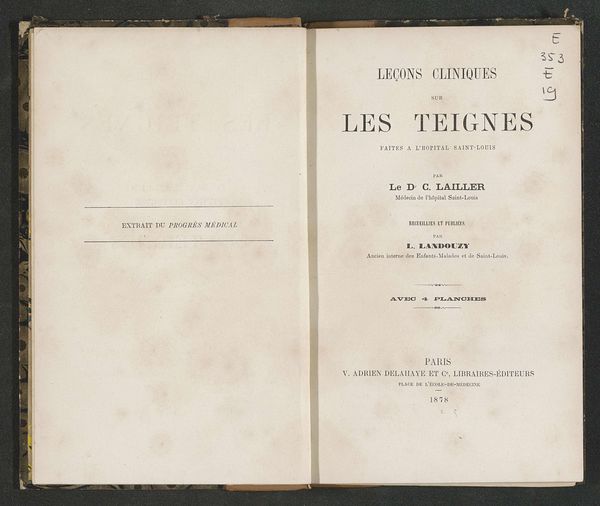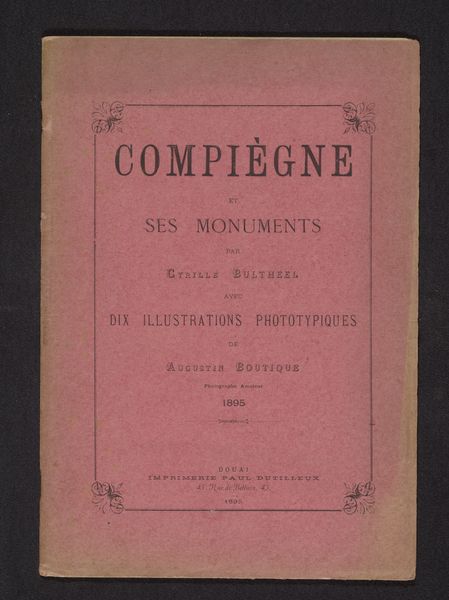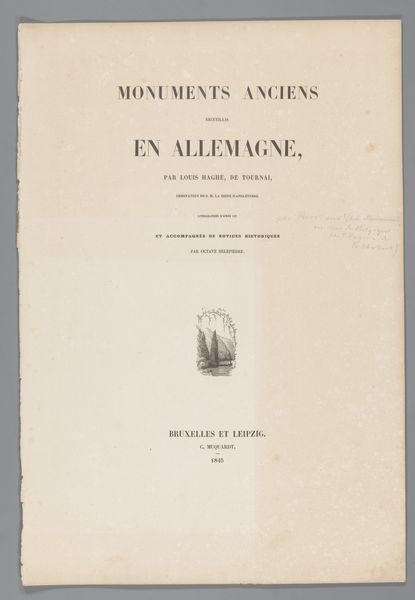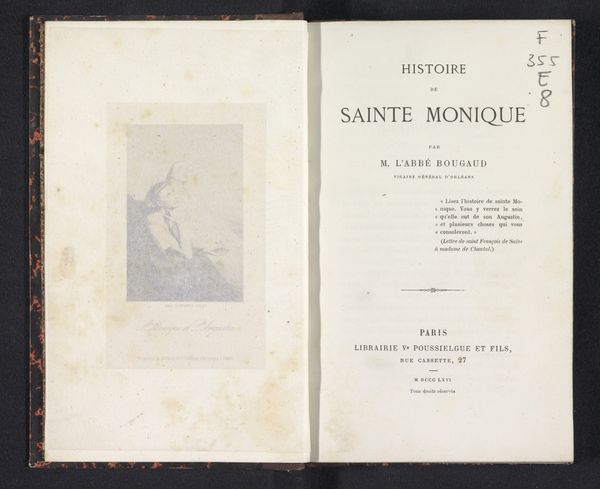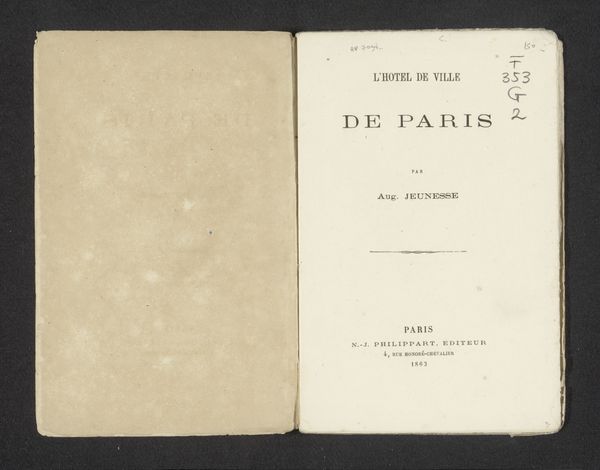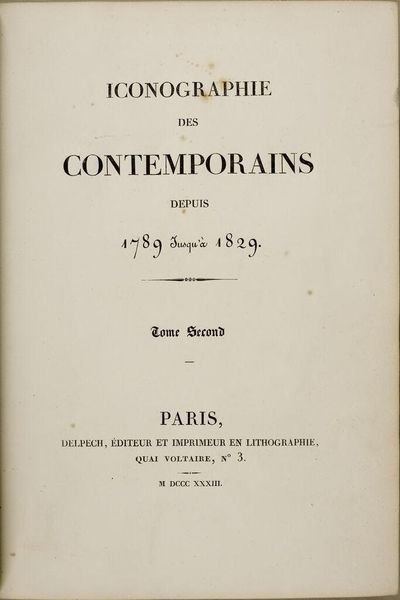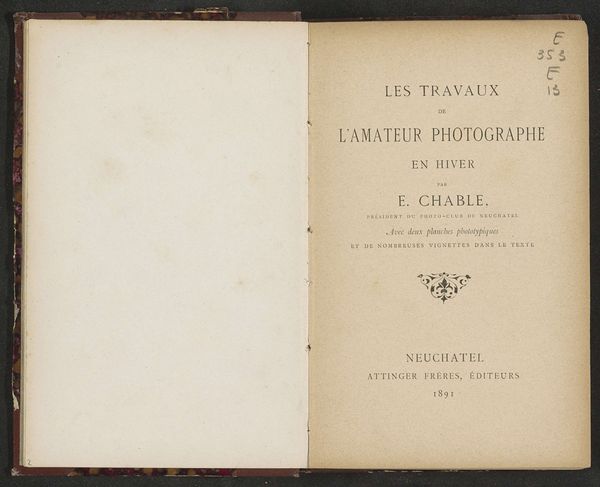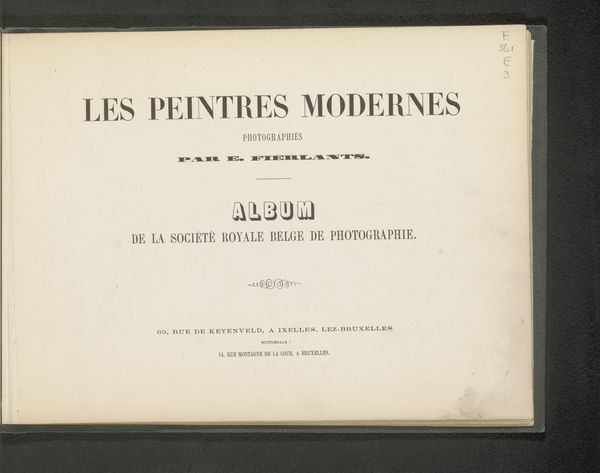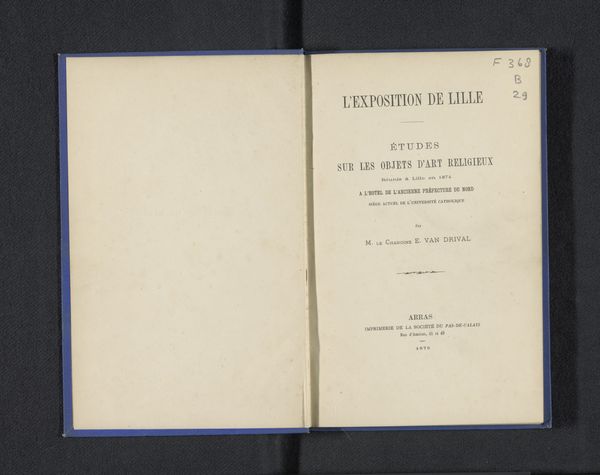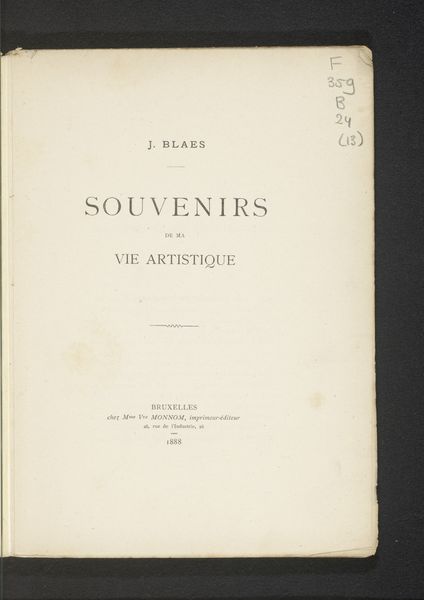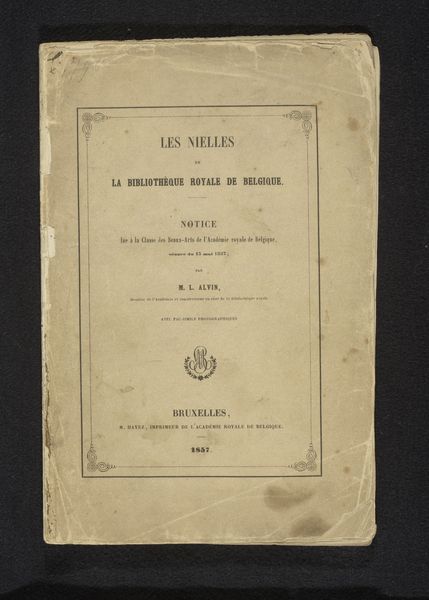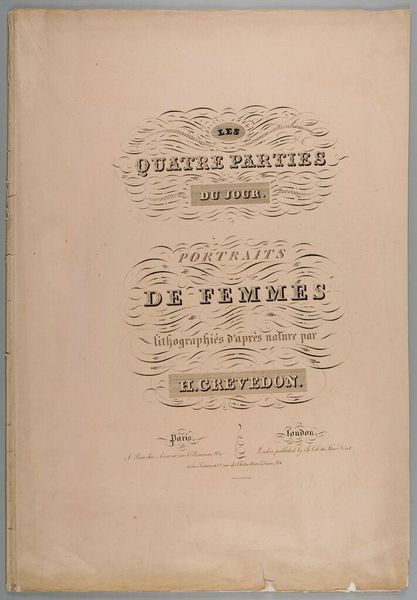
Jerusalem, Etude et reproduction photographique des monuments de la ville sainte depuis l' époque judaique jusqu'à nos jours 1856 1854 - 1859
0:00
0:00
print, photography, albumen-print
# print
#
landscape
#
photography
#
islamic-art
#
albumen-print
Copyright: Public Domain
Editor: This is "Jerusalem, Etude et reproduction photographique des monuments de la ville sainte depuis l' \u00e9poque judaique jusqu'\u00e0 nos jours," a photographic print made between 1854 and 1859 by Auguste Salzmann. It looks like an old title page for a photography collection of Jerusalem’s monuments. What catches your eye when you look at it? Curator: Oh, my dear, what *doesn't* catch my eye? The deliberate choice of typography for one thing. The title is assertive, almost declamatory! Then there's the slightly fussy description. And that very faint credit “chargé par le Ministère de l’Instruction publique,” almost hidden, suggesting the photographer was burdened and sustained in equal measure. Does the word Jerusalem stir any feelings in you? Editor: It feels ancient and holy, I guess. Maybe a little sad, knowing the conflicts tied to the city. Curator: Precisely. Salzmann wasn't merely documenting; he was on a mission – both scientific and, dare I say, spiritual. Imagine him, lugging heavy equipment, capturing these sun-drenched stones… Did he consider himself an artist, an archaeologist, or something in between, do you think? The crispness of the albumen print versus the messy politics...It is quite poignant. Editor: I hadn't considered his position or motivation like that, but I think his approach reflects something between all those motivations. It's like he was searching for historical “truth” with this relatively new medium of photography. Curator: Indeed! And in doing so, my darling, created his own layered and fascinating truth. He used science to seek a kind of historical poetry, I believe. So what's changed for you now that we've explored it a little deeper? Editor: I see the photo with renewed appreciation as an insight into the artist himself, into what he believed to be the role of the image-maker. Thank you.
Comments
No comments
Be the first to comment and join the conversation on the ultimate creative platform.
